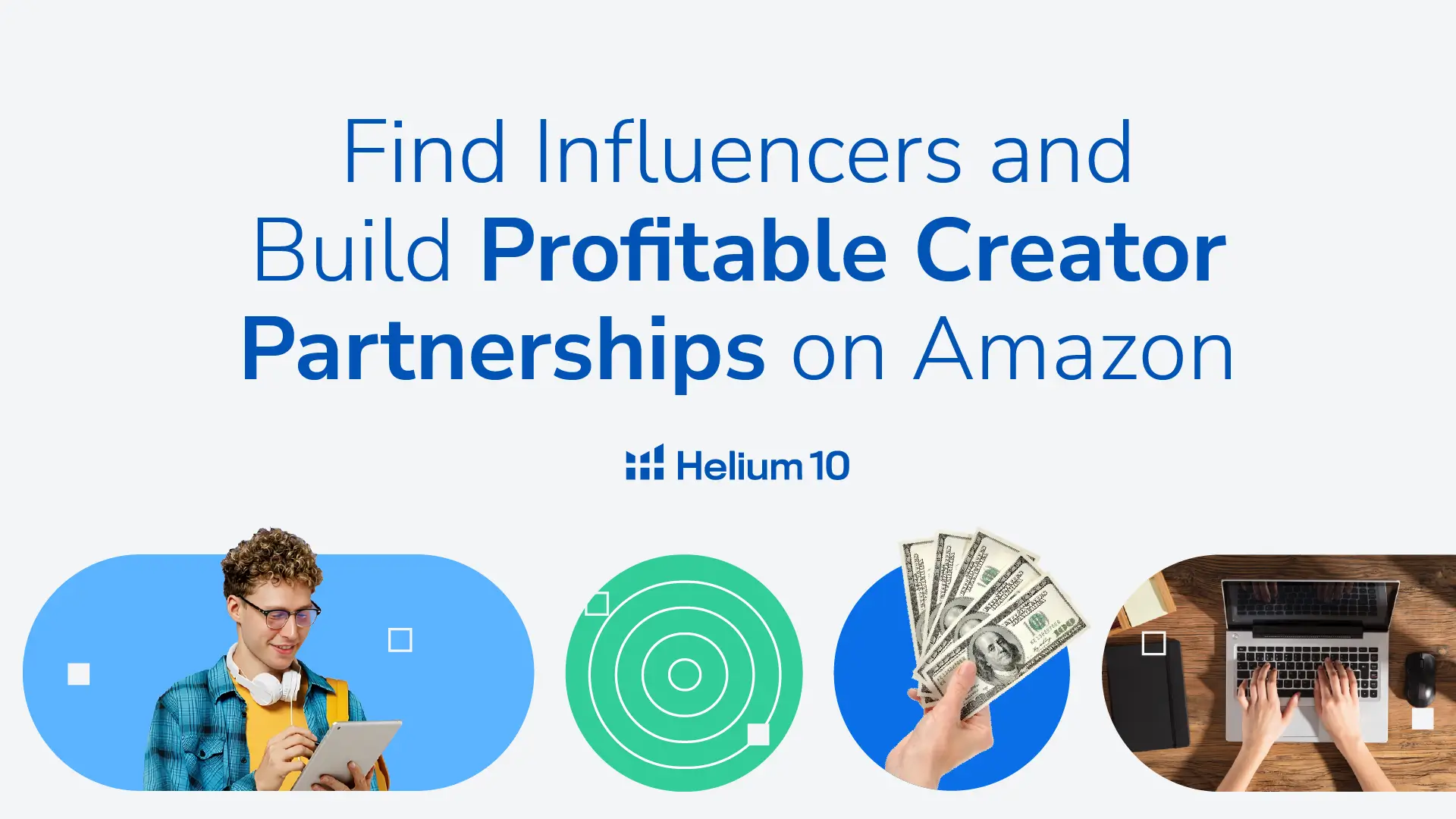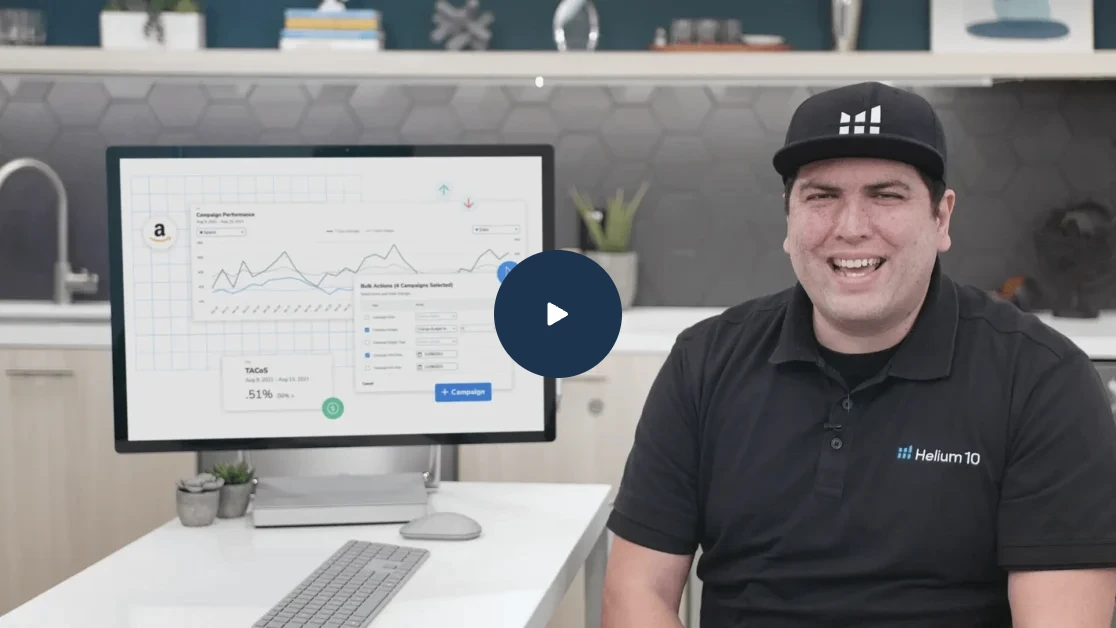
Finding Influencers and Building Creator Partnerships on Amazon


Table of Contents
- Affiliate vs. Influencer Marketing for Amazon Sellers: What’s the Difference?
- Finding the Right Creators for Your Brand
- How to Track the Success of Influencer & Affiliate Partnerships
- Best Practices for Managing Creator Relationships
- What Kind of ROI Can You Expect?
- When Should Amazon Sellers Start Creator Marketing?
- Final Thoughts: A Shortcut to Scaling Outside Traffic
Imagine driving sales before your customer even hits Amazon’s search results. Affiliate and influencer marketing offer a powerful (and often underutilized) opportunity for Amazon sellers looking for additional sales.
The challenge is that most sellers don’t know where to start.
How do you find creators who are aligned with your niche? How do you track ROI? And most importantly—how do you build and maintain relationships that actually drive results?
In this blog, we’re breaking down affiliate and influencer marketing with expert insights. You’ll learn the difference between affiliate and influencer marketing, how to find the right creators, and what tools can help you scale this channel for your Amazon brand.
Affiliate vs. Influencer Marketing for Amazon Sellers: What’s the Difference?
The terms “affiliate” and “influencer” are often used interchangeably, but there are key differences:
- Affiliate marketing focuses on performance-based promotion. Affiliates are typically paid a commission for each sale they drive, and every click, conversion, and payout is tracked.
- Influencer marketing is more about content creation and brand awareness. Influencers might be paid upfront to create a post or video, but conversions aren’t always tracked or guaranteed.
That said, there’s plenty of overlap. Influencers can act as affiliates when using trackable links—and affiliates often have influence within specific communities. Your best creators may be a hybrid of both.
Finding the Right Creators for Your Brand
Here’s where many sellers get stuck: “How do I actually find affiliates or influencers who fit my niche?”
Start by thinking beyond your product. Focus on the communities and content that relate to your customer’s lifestyle.
For example, if you sell a paleo food product, your audience likely overlaps with the CrossFit or fitness space. You may not find a content creator reviewing your exact product—but you will find health bloggers, fitness coaches, or recipe creators your customers already trust.
Another tactic to find influencers to help drive product sales is to see what your competitors are doing. While you don’t want to directly work with those influencers, it might give you an idea of other profiles to look for on social media and what aspects of an influencer might work well with your brand.
Here are a few other ideas:
- Leverage social media to find creators who fit your community or brand style.
- Browse Amazon Live to find popular influencers.
- Ask any existing affiliates for referrals.
- Ask your customers – they are tried and tested and already enjoy your product.
- Utilize specialty software to help refine your search.
Once you’ve built your influencer shortlist and started partnerships, the next step is making sure those efforts actually drive success for your brand. That’s where tracking and measuring performance becomes critical.
How to Track the Success of Influencer & Affiliate Partnerships
Once your influencer or affiliate campaigns are live, it’s crucial to have systems in place to track what’s working. Here are a few reliable tactics sellers can use to monitor creator-driven performance on and off Amazon:
1. Unique Tracking Links & Discount Codes
Create personalized URLs with UTM parameters or Amazon Attribution tags to track each partner’s traffic, clicks, and conversions. Combine this with custom discount codes (e.g., “JANE15”) to see which influencers are not just driving clicks—but closing sales.
2. Review Engagement Metrics
Request performance reports from your creators that include story views, click-through rates, saves, and shares. While this won’t reflect Amazon conversions directly, it’s a great indicator of awareness and buyer intent.
3. Use a Centralized Tracker
Maintain a spreadsheet or simple CRM to log each partner’s campaign dates, content type, link/code used, and performance. This helps you spot top performers, seasonal trends, and repeat collaboration opportunities.
4. Repurpose Top-Performing Content
If a creator’s content is driving strong engagement, consider integrating it into your Amazon listing assets—such as A+ Content, Brand Story modules, or off-Amazon landing pages. Then monitor if that UGC improves conversion rate or click-through rate (CTR).
5. Look for Leading Indicators of Success
During a recent workshop, Amazon experts emphasized the importance of momentum. If your influencer campaign results in increased traffic, even without immediate sales, that activity can still support your Amazon ads, organic ranking, and customer signals. Monitor patterns like add-to-carts, wish lists, or longer session durations alongside traditional sales metrics.
The key is to combine both qualitative and quantitative signals across platforms, so you can invest more in the partners that are actually moving the needle.
Best Practices for Managing Creator Relationships
The most successful affiliate programs are built on long-term relationships and consistent communication.
To keep your partnerships strong, try some of these ideas:
- Stay in touch. Share upcoming launches, seasonal promotions, or content calendars so creators can plan their campaigns.
- Incentivize performance. Offer bonuses or run contests for top sellers.
- Diversify your network. Include a mix of influencers, bloggers, YouTubers, and niche publishers to reach different customer touchpoints.
Over time, you’ll build a creator network that feels more like an extension of your brand and deliver steady traffic and sales without requiring constant hands-on management.
What Kind of ROI Can You Expect?
If you’re wondering whether affiliate marketing is worth the effort, the short answer is yes, but it has to be structured thoughtfully.
One DTC brand generated over $1 million in affiliate-driven revenue in just their first year by focusing on a creator-first approach and building a network of 600 active partners. The takeaway? With the right mix of outreach, incentives, and support, even a modest program can drive measurable results.
Here’s a simplified breakdown to illustrate potential ROI:
- $50 average order value
- 15% affiliate commission = $7.50 per order
- 50 conversions in a month = $2,500 in revenue
- $375 in commission payouts
- $500 in platform/management costs
- Net return: $1,625 in profit
That’s a 3.25x ROI, and that’s before accounting for Amazon’s Brand Referral Bonus, which can boost returns even further by giving you a percentage of referral sales back in your pocket.
When Should Amazon Sellers Start Creator Marketing?
You don’t need to be a 7-figure brand to explore affiliate or influencer marketing. But timing matters.
Before you start, make sure:
- Your product listings are optimized
- Your fulfillment and reviews are strong
- Your conversion rates are competitive
Once your Amazon foundation is solid, you’re ready to drive outside traffic and creator partnerships are one of the most scalable ways to do it.
Final Thoughts: A Shortcut to Scaling Outside Traffic
Affiliate and influencer marketing might sound intimidating at first—but with the right tools and strategy, it’s one of the smartest ways to grow and build relationships.
The find success working with any creative partner (micro-influencers, macro-influencers, affiliates, or loyal customers) create systems that are trackable, scalable, and repeatable.
Ready to improve your Amazon business? Sign up for Helium 10 for FREE today to experience a full spectrum of e-commerce solutions.
Achieve More Results in Less Time
Accelerate the Growth of Your Business, Brand or Agency
Maximize your results and drive success faster with Helium 10’s full suite of Amazon and Walmart solutions.

